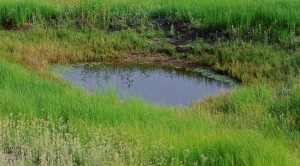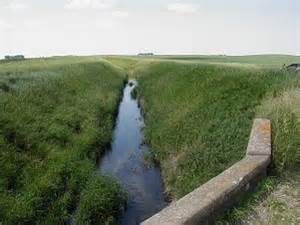EPA and Army Corps Publish Final Rule on Definition of Waters of the United States
EPA and Army Corps Publish Final Rule on Definition of Waters of the United States
After two years of debate and controversy, the U.S. Environmental Protection Agency (“EPA”) and the U.S. Army Corps of Engineers (“Corps”) published a Final Rule on what defines Waters of the United States (80 FR 124: 37054-37127). The Final Rule becomes effective on August 28, 2015. A summary of the Rule is available here.
The Old Rule
The Final Rule was supposedly developed to bring agency interpretation on Waters of the United States and federal-agency jurisdictional limits into line with rulings by the Supreme Court in 2001 (“SWANCC”) and 2006 (“Rapanos”) that narrowed agency jurisdiction and redefined how the Corps delineates waters of the United States (U.S.), which include wetlands. Following each of these rulings, the EPA and Corps issued interim and final guidance on jurisdictional limitations based on the criteria included in the Court’s opinions. The guidance, however, was confusing, did not clarify jurisdictional limits, and led to additional litigation over the boundaries of federal reach.
The New Rule
The new Rule specifically maintains the existing definitions of traditional navigable waters, interstate waters, the territorial seas, and impoundments and keeps all of these types of waters within jurisdictional waters of the U.S. The Final Rule, however, alters the way the Corps deals with tributaries to these waters and associated waters and wetlands. It also contains specific language regarding certain special types of waters.
The Final Rule emphasizes the concept of a “significant nexus test,” drawn from Justice Kennedy’s opinion in Rapanos, which analyzes whether waters have a significant effect on the chemical, physical, or biological integrity of a traditional navigable water, interstate water, or territorial seas. A significant controversy in the Final Rule is that it includes as waters of the U.S. all tributaries to and waters adjacent to traditional navigable waters, interstate waters, or territorial seas. Waters are considered “adjacent,” and therefore are included as waters of the U.S., if they are within 100 feet of a water of the U.S.; within the 100-year floodplain and not more than 1,500 feet from a water of the U.S.; or within 1,500 feet of the high tide line–regardless of whether the water in question meets Justice Kennedy’s significant nexus test.
The Final Rule requires case-specific application of the significant nexus test for certain types of identified waters (i.e., prairie potholes, Carolina bays and Delmarva bays, pocosins, western vernal pools, and Texas coastal prairie wetlands) and for any waters found within a 100-year floodplain or within 4,000 feet of a water of the U.S.
The Final Rule requires that similarly situated waters be evaluated collectively for effects on waters of the U.S. and defines the region in which similarly situated waters are evaluated as the watershed. All specifically named types of waters in the Final Rule (listed above) are presumed to be similarly situated. Significantly, once a determination of jurisdictional status has been made on a water of the U.S., all similar features within a watershed may automatically be considered to be likewise jurisdictional.
Non-Jurisdictional Waters And Exceptions
Some waters are categorically excluded from jurisdiction regardless of whether they are adjacent to a water of the U.S., and most of the exceptions listed in the Final Rule were excluded from jurisdictional waters under previous Corps guidelines. For example: water-filled depressions created in dry land incidental to mining or construction activity; waste treatment ponds; artificial lakes, ponds, reflecting pools, swimming pools, or small ornamental waters created in dry land; erosional features, including gullies and rills; puddles; groundwater; stormwater control features; detention and retention basins built for wastewater recycling; wastewater recycling structures; groundwater recharge basins; percolation ponds; and water distributary structures built for wastewater recycling.
Of note are the descriptions of “ditches” that are not considered jurisdictional: 1) ditches with ephemeral flow that are not a relocated or excavated tributary; 2) ditches with intermittent flow that are not a relocated or excavated tributary and do not drain wetlands; and 3) ditches that do not flow into a traditional navigable water, interstate water, or the territorial seas (either directly or through another water).
Waters and wetlands on agricultural lands are addressed in the Final Rule, but there is no substantial change from current practice by the Corps. The Final Rule excludes prior converted cropland (as determined by EPA); artificially irrigated areas that would revert to dry land should application of water to that area cease; and artificial, constructed lakes and ponds created in dry land such as farm and stock watering ponds, irrigation ponds, settling basins, fields flooded for rice growing, log cleaning ponds, or cooling ponds. The Corps’ requirement to remove artificially applied water for sufficient time to determine if wetlands are present appears to remain the necessary approach.
The full Final Rule and all associated documents is available HERE.


